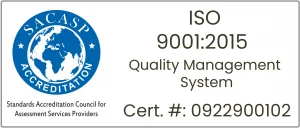VRPs (Variable Recurring Payments) are the most significant improvement in open banking to date. VRP addresses one of the industry’s most pressing issues: the requirement for consent via Strong Customer Authentication (SCA) for every transaction. VRP effectively authorised authentication to a third-party provider (TPPs), which then enabled trusted beneficiaries to pay with a single click.
VRPs will be easier and faster to set up than existing payment methods (Direct Debit, CPA), allowing consumers to manage payments more easily and integrating payments into a broader range of customer journeys.
As a result, VRPs are on track to become yet another example of the growing trend of “embedded finance,” as well as the overall transformation of open banking into open finance.
VRP has so far only been mandated for Sweeping use cases, which are transactions between two accounts with the same name. Notably, in developing VRP for the Sweeping use case, banks have built the infrastructure needed to support first-party-to-third-party transactions.
Customers will be able to use VRP for anything from subscriptions to in-app payments, as well as general e-commerce. Card-on-file will be replaced by account-on-file. Direct debits that are outdated and have a problematic operating interface may be phased out.
How do VRPs function?
Variable Recurring Payments require these three parameters to create a long-life consent token.
1. Maximum number of transactions in each period (for example, a month),
2.Maximum value of any single transaction,
3.Total aggregate value of all transactions in that period
For example, if your maximum transaction value of any single transaction is GBP300 and assume it never exceeds GBP300 per transaction. If you make such transactions 5 times, the total amount would be GBP1500 which is the maximum number of transactions and total aggregate value for the month. And if transactions stay within these parameters, SCA is not needed.
How do the customers receive help from VRP?
VRP enables faster and more secure payments. Moreover, customers will never be asked to update their credit or debit card information again. Bank accounts do not expire, while credit cards do. VRPs also provide customers with greater convenience, control, and security. While open payments are still in their early stage, there is strong adoption and growth. The benefits offered by VRP supplies will only speed up this process.
What does VRP mean for retailers?
VRP has massive benefits for merchants, including real-time settlements, lower costs, the getting rid of card fraud, lower customer churn, and no chargebacks.
VRP enables the opportunity to monetise Open Banking
VRP is the first opportunity for banks to monetize their open banking investment and contribute to the ecosystem’s balance. This has a hugely positive effect.
Open banking eases a handshake between banks (ASPSPs (Account Servicing Payment Service Provider)) and TPPs. As a result, these industry players must continue to collaborate on initiatives that expand the functionality set of open banking and the opportunities it provides.
VRP is one such collaboration model, and it stands for a significant opportunity to bring a fairer distribution of value across the ecosystem. This new collaboration between FinTech and banks will level the playing field as we collaborate to fulfil the full promise of real-time payments everywhere.
VRP works by securely connecting authorised PISPs (Payment Initiation Service Providers) to customers’ bank accounts, allowing them to make payments on their behalf. VRPs supply several advantages over Direct Debit and card CPA to both small businesses making payments and receiving payments.
VRP and Sweeping
Sweeping is the automatic transfer of funds between a customer’s accounts, such as transferring excess funds to another savings account or using them to repay a loan or overdraft account. VRPs are an innovative method of making ongoing payments.
The CMA9 will first make these VRP APIs (Application Programming Interfaces) available for “sweeping.” This is the transfer of funds from one PSU (payment service users) account to another. This can be used to automate a fixed amount to be transferred to a savings or investment account each month, or to sweep funds between current accounts to allow a customer to receive help from new account features, rates, or fees without switching current accounts.
One of the core priorities of the open banking agenda is user experience, and both regulators and industry will be monitoring the situation as the use of VRPs for sweeping are started rolling out in the coming months.
Real-world business advantages of VRPs for sweeping
The OBIE found potential benefits for both consumers and SMEs by combining VRPs and sweeping. These are some examples:
Saving money
You should be aware that, £100 billion is locked up in the UK’s business current accounts, earning little interest. However, while many businesses have a lot of cash, they do not have the time or interest to do anything with it.
A mandate can be set with a savings company to oversee a business’s current account. When the balance exceeds a certain threshold, the money could be transferred to a business savings account. Money could be swept back every time a balance falls below a certain threshold.
Overdraft protection
Sweeping has the potential to create a type of unbundled overdraft to increase competition in the business’s current account market.
International payment cost savings
According to a 2016 report, banks generate approximately £4 billion in excess profit when small businesses do not make cross-border payments. Sweeping VRPs could be used to remove the friction from using an alternative payment company or foreign exchange business.
Manage tax efficiently
As HMRC incorporates Open banking enables technology to support real-time secure payments. With VRP and sweeping, SMEs can manage their taxes well and make payments automatically without any fail once the invoice is generated or sent to SMEs.
New Subscription Economy Options
The subscription economy is expanding, with many SMEs taking part. VRPs offer a payment system that incorporates the low cost of Direct Debit with the speed and flexibility of cards, potentially creating a strong alternative in this growing market.
VRPs and the OBIE Roadmap
If you think about the next steps for VRPs, you should consider the Open Banking Implementation Entity’s (OBIE) Roadmap, which was developed in collaboration with the CMA that supplies a framework for Open Banking implementation. This Open Banking roadmap outlines several measures, including the development of technical standards for VRPs that are compliant with PSD2 (Payment Service Directive 2), the UK Payment Services Regulations 2017, and the GDPR.
Even though OBIE developed technical standards for VRPs, the CMA9 banks are not mandated to implement VRPs for all use cases. But CMA has ordered the CMA9 to implement VRPs as the mechanism for implementing sweeping. The use and implementation of the VRP standards are optional and at the discretion of the CMA9 firms for use cases unrelated to sweeping.
The CMA had originally planned to implement VRPs for sweeping by January 31, 2022. However, in response to OBIE recommendations, the CMA has allowed the CMA9 to extend the deadline. TPPs must then complete testing of the VRP standard in a live, controlled environment by July 2022, “so the firms are ready to advance general availability of the standard.”
Potential Use cases of VRP and Sweeping
Sweeping is one of the potential use cases for VRPs, which could be applied to a wide range of recurring payments and as an alternative to traditional fixed-period direct debit or card-on-file payments.
The OBIE’s Proposition Paper, published in November 2020, describes several use cases for VRPs, including:
a) Automated payments for electricity bills.
b) Linking a bank account to a social networking site app for in-app payment authentication.
c) Setting a six-month payment limit for a new subscription.
d) Automated payments for ride-hailing fees.
e) One-time payment setup for an online marketplace’s one-click payments.
f) Using a third-party smart saving app to transfer money from a bank account to a savings account on a flexible/variable basis.
g) Utilising a third-party service that supervises bank accounts and retains a threshold balance or assisting in avoiding overdraft fees by transferring funds between accounts as needed.
h) Obtaining short-term credit to avoid overdraft fees, then automating credit repayments to reduce overdraft charges and borrowing costs.
Concluding thoughts
Our analysis clearly showed that there is an appetite for VRP technology, and SMEs are eager to take advantage of this capability. VRPs help SMEs to mitigate overdue payments, and remove challenges, and pain points associated with other payment methods such as Direct Debit and CPA. The key to adoption will be in ensuring time and cost barriers are overcome to ensure SMEs get to the start line.
Macro Global’s Open Banking (PSD2) solution, Tavas enables banks to create a connected experience while also allowing them to adapt to emerging opportunities to position themselves in the new era of consumer-centric banking. Tavas – Open Banking Product Suite & Solutions instils innovation in banks by redefining account and payment aggregation via a game-changing Open Banking API Framework that addresses all compliance requirements while providing a best-in-class user experience.
Discover more about our best-in-class Open Banking solution.

















